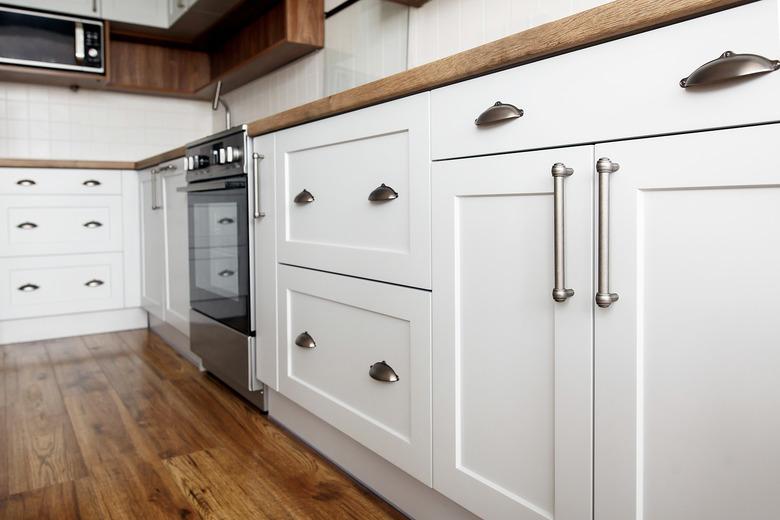6 Types Of MDF Wood
MDF stands for medium-density fiberboard, a man-made wood product manufactured from small wood fibers, such as sawdust and wood shavings, as well as resin and wax. These ingredients are then mixed together, formed into panels, subjected to intense heat, and sanded smooth. The end result is a strong, durable, and smooth product that is still reasonably inexpensive, making it a good choice for cabinetry, furniture, wood paneling, and more. In fact, most people who have purchased and constructed an IKEA product have at least some familiarity with MDF products.
Here are the types of MDF wood, how each is used, and some pros and cons of the material.
1. Particleboard and Plywood
1. Particleboard and Plywood
It is worth noting that although particleboard and plywood are both engineered wood products, they are not technically MDF. Particleboard is made from small wood chips that are glued together, heated, and then pressed together into panels before being coated with a resin to increase their water resistance. Compared to MDF, particleboard is very inexpensive, is not particularly strong, and doesn't hold up as well against moisture.
On the other side of the spectrum is plywood, which is a product made from multiple sheets of thin wood veneer that are laminated together in alternating directions. This leaves the material with a stronger core strength, more moisture resistance, and better ability to hold screws than MDF, though plywood is also quite a bit more expensive.
2. Standard MDF Wood
2. Standard MDF Wood
Normal MDF is sold in large sheets, which can be very heavy and very stiff. In fact, a standard MDF panel is much heavier than plywood and will usually require at least two people to carry it, particularly because it is prone to chipping on the corners and scratching on the surface. It is usually sold in either tan or dark brown and comes in a variety of thicknesses, with the most common being between 1/2 and 3/4 inch thick.
3. Ultra-Light MDF
3. Ultra-Light MDF
Sometimes, the weight of MDF can be problematic, which is why manufacturers also produce a lighter version known as ultra-light MDF. These have less density than standard MDF and can weigh around 30 percent less.
4. Fire-Retardant MDF
4. Fire-Retardant MDF
Also known as fire-rated MDF, these panels may feature either red or blue markings to indicate their special fire-resistant properties. These products slow flame spread during a fire and are sometimes required under building codes that restrict wood use to only Class-1-rated products. Even when not required by code, these are a good option for those in areas prone to wildfires or for use near heat sources, such as cabinetry built near stoves or ovens.
5. Moisture-Resistant MDF
5. Moisture-Resistant MDF
Just as blue or red markings on an MDF panel can be an indication that the product is fire-resistant, green markings are there to designate that a product is resistant to moisture, meaning it is suitable to be used in environments with high humidity or frequent water spillage, such as kitchens and bathrooms. These products should still be limited to use indoors, and it is worth remembering that water-resistant is not the same as waterproof, meaning they will still be damaged by extended contact with moisture.
6. Formaldehyde-Free MDF
6. Formaldehyde-Free MDF
Most MDF contains urea-formaldehyde, a carcinogen that can cause nausea, coughing, skin irritation, and irritation of the eyes, nose, and throat. Those concerned about exposure to formaldehyde can search for products designated as formaldehyde-free.
